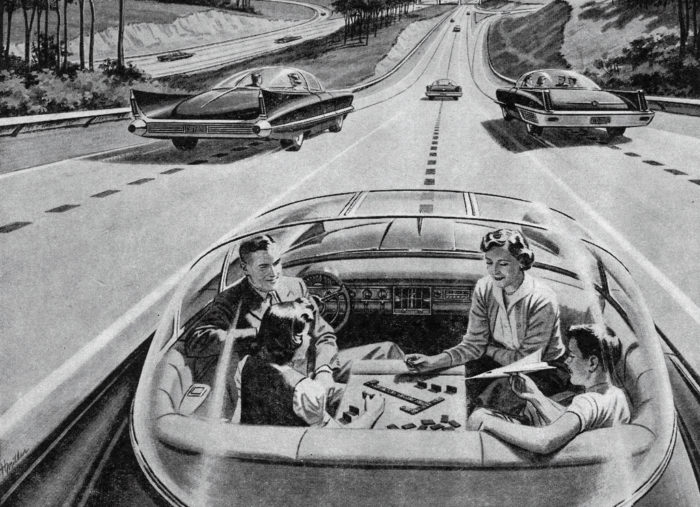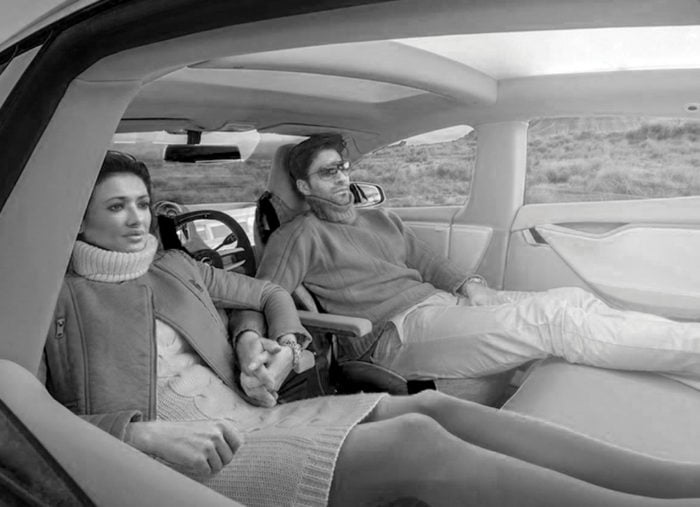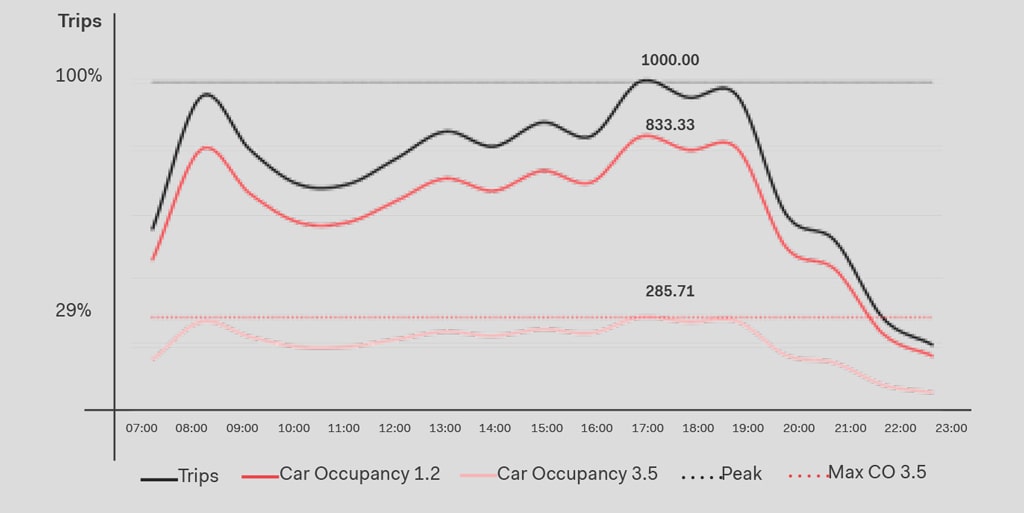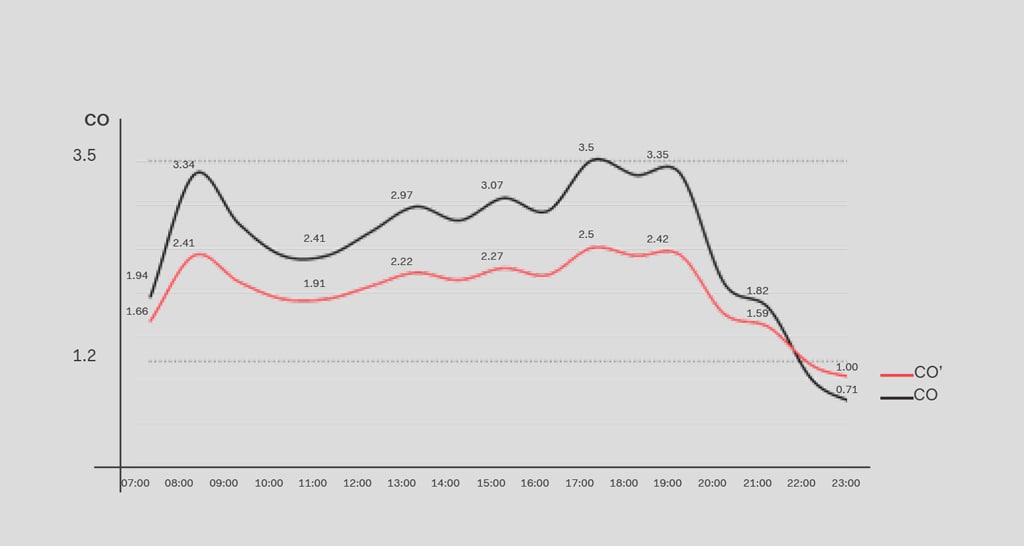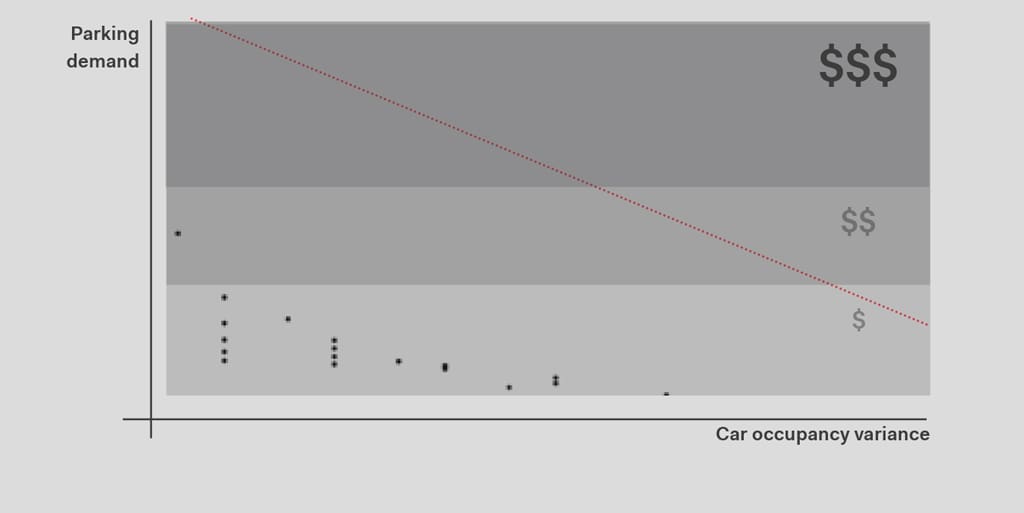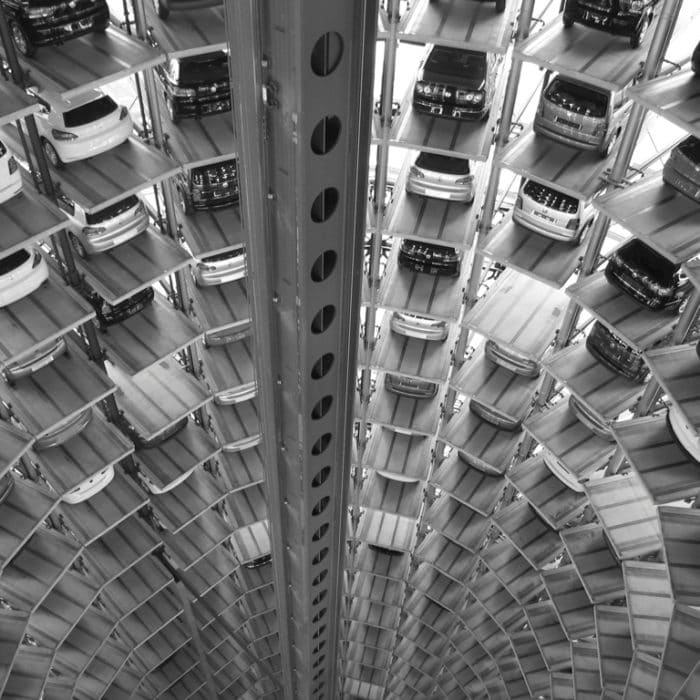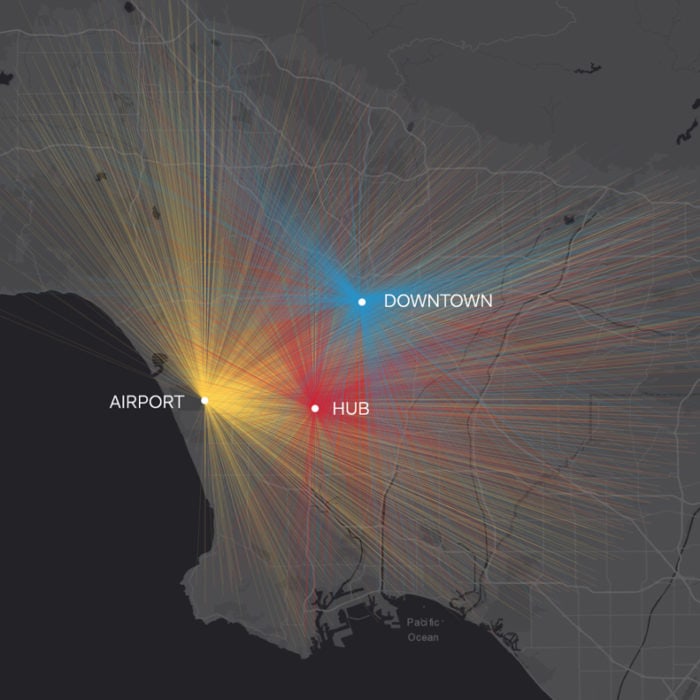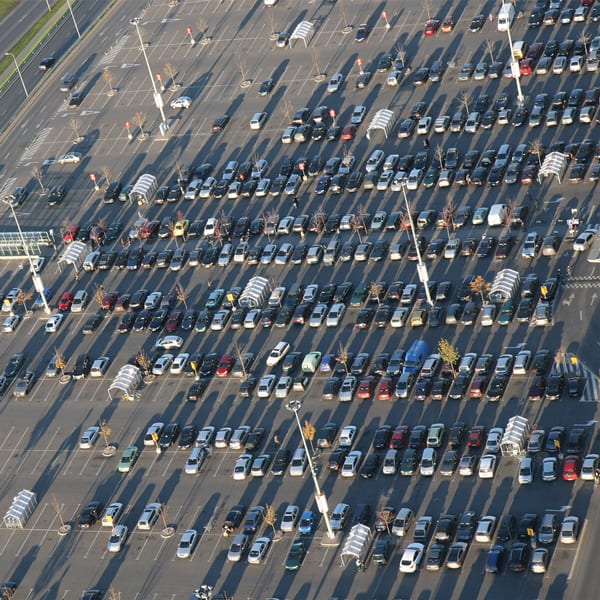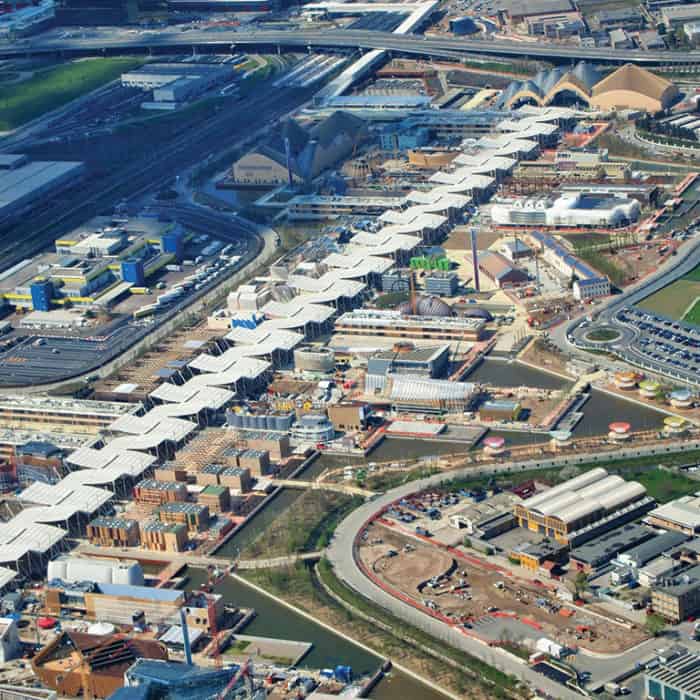Driverless:
more or less?
“In order to change an existing imagined order, we must first believe in an alternative imagined order.”
– Yuval Noah Harari
Sapiens: A Brief History of Humankind
Today driverless is all about vehicles technology & design
Today, most leading auto manufacturers and tech companies are working on driverless innovations, with the major effort and focus is on the design of vehicles and the technological devices to improve their performance. Driverless vehicles are providing planners with a unique chance to rethink cities in regard to the automobile itself.
With this technology urban mobility will be revolutionized.
Bulky transport infrastructure such as parking facilities and depots, will be eliminated. The expected reduction of vehicles on the road will offer the possibility to humanize cities, prioritize people over cars, and dedicate more space to pedestrian activities and bicycling.
The vision of the 50s
The very first vision for automated highways was revealed during the “1939 New York World’s Fair” attended by over 44 million visitors with “The World of Tomorrow” as the main theme. The installation “Futurama: Highways & Horizons” designed by Norman Bel Geddes and sponsored by General Motors Corporation received heightened attention from visitors. It included an automated highway system where cars travelled through trenchlike tracks: this was the first realization that highway driving lends itself to automation. This iconic poster was published in 1957 as an advertisement by America’s Electric Light & Power Company to show: “Highways will be made safe – by electricity” showing a family enjoying a board game in their self-driving car with accompanying text : “No traffic jam… No collisions… No driver fatigue”. An ideal depiction that is still relatable to many drivers commuting daily on congested roads around the world.
What has changed?
During the past decade, a substantial amount of effort has been put towards improving the design of vehicles and their technological features. Today the universal presence of Internet 4.0 links every person and object in a fabric pulsating with a unique pace. Tech companies have already started with the dynamic mapping of cities and seamless realtime data transfer makes it possible for vehicles to communicate with each other and with infrastructure to operate in real urban and inter-urban roads. With kilometers worth of completed test-drives both with and without backup drivers, these vehicles are gaining the trust of urban politicians around the globe to issue permits for test drives on their city streets and public roads, besides other road users. Their presence proves that mobility and mobility-related technologies could significantly influence the way people experience cities. This urges urban planners to rethink cities, public spaces, street design, etc. and urges transport planners to re-examine basic concepts of mobility such as daily commute, first and last-mile transport, delivery, and so on.
Is a hybrid future possible?
No significant changes will occur if the current mobility paradigm is not re-imagined.
Fleet size dimensioning
- The expected Resident and User Population of any given development is the starting point for determining the number of produced trips. A clear understanding of demographic aspects requires a thorough analysis of demographic trends, changing habits, household structures, etc.
- Modal Share is another key factor for the estimation of a driverless fleet and a determining component that governs the overall mobility dynamics. Modal share is both an outcome of policies and actions and an objective that each city predefines to itself. It is essential to provide options for both private and shared public vehicles in order to reach a balanced modal share and avoid over dependence on private cars, among which driverless cars may be.
- Higher Car Occupancy lead automatically to less vehicles on roads. It is necessary to implement policies encouraging higher occupancies in order to reduce congestion. A future without regulation through policy could lead to the travel of zero occupant driverless cars thereby increasing traffic loads, challenging traffic management schemes, increasing pollution, and leading to inefficient energy consumption.
- The same car can be used multiple times in an hour, depending mainly on the Car Ownership model. Challenging car ownership and encouraging private owners to share their cars is a crucial behavioural shift that will certainly affect the number of cars on the network and in their garages or driveways.
- Internal Capture is the estimated number of trips of a given site or mixed-use development based on complimentary land uses that support the range of trip purposes. These trips can be estimated to utilize infrastructure that supports shorter trips such as walking, biking, or micro transit. The estimation of this variable will be critical in determining fleet size internal capture in developments may range from zero (e.g. single land use developments) to 20% and above (e.g. mixed-use developments).
- Even in a controlled and connected system, the unpredictable Human Factor contributes to the efficiencies and inefficiencies of the entire system, such as delays caused by users boarding and disembarking times, users’ preferences on board that will be able to set some driving conditions (speed, acceleration/ deceleration, etc.). Introducing this concept early on will allow researchers to spend time measuring, analysing and quantifying these factors.
Car occupancy policies
Car occupancy and fleet dimensioning
A driverless future should be focused on the concept of sharing to promote higher occupancy rates. In order to provide an efficient and high-quality service, MaaS companies are exploring ways to forecast the variations of car occupancy during different times of the day as they begin to implement their car pooling programs. Accurate fleet dimensioning is essential to reduce the costs and provide a more accessible service for customers.
A different method to determine and increase the car occupancy rate is through the implementation of a dynamic pricing policy. Having a flexible pricing structure would allow for matching supply to demand. During peak hours, as travel demand surges, higher costs will encourage pooling of more passengers into a single vehicle. This allows fluctuation in person travel demand to be managed by the available seats in the driverless vehicles and not by an increase in fleet size. Price variations and carpooling should be managed by the service provider and operator in order to provide a continuous service.
Car occupancy index
It’s possible to estimate the car occupancy rate by considering a scenario in which the large majority of trips are shared. By adopting a very optimistic car occupancy rate of 3.5 pax/vehicle during the peak hour, the required vehicles would represent 29% of the vehicles needed in the single passenger scenario. Keeping the number of vehicles dispatched on the road network fixed, the car occupancy rate for the rest of the day varies between 0.71 and 3.5 pax/vehicle.
A sensitivity analysis was conducted in which car occupancy was reduced to 2.5 on average during the day. This shows that car occupancy reaches a minimum of 1.9 pax/vehicle, which is still higher than the current average.
Hourly car occupancy values
The curve was further corrected in order to avoid car occupancy less than 1 during night hours as this implies vehicles are circulating with zero occupants. This might result in longer travel times during those hours, however, is considered to be essential for reducing the fleet dimension and avoiding inefficiencies.
Car occupancy and parking demand
By increasing car occupancy through a dynamic pricing system, it will be possible to accommodate different travel demand levels through a fixed and reasonably dimensioned fleet. As car usage is maximized, cars will be in motion during most of the hours of the day. As a result, the need for parking space will decrease while the need for drop-off and pick-up areas will increase. This will be achieved only if the fleet size is dimensioned appropriately and if travel demand and supply are matched through an efficient traffic management system.
The parking demand is directly related to the car occupancy rate: broader range of flexibility during the day would virtually eliminate parking needs. However, a stricter range would require different fleets designed to accommodate the demand during peak hours. The space saved from the reduced parking demand can be utilized to enrich and diversify land use, providing an opportunity to acquire higher revenues from the development and even reduce travel demand by providing alternative travel services.
Car occupancy and travel demand
Currently the trends of car occupancy are mostly influenced by the quality of alternative transit modes and user behaviour rather than travel demand itself. However, the number of trips linked to car occupancy at a low rate usually translates into a rise in the number of trips, generating traffic congestion and increasing the need for new infrastructure to match demand.
The ideal scenario, to be reflected through appropriate policies, is to achieve the highest car occupancy while reducing the number of vehicles on the network. This will be a crucial objective for minimizing the space occupied by road infrastructure and freeing up cities for other functions.
